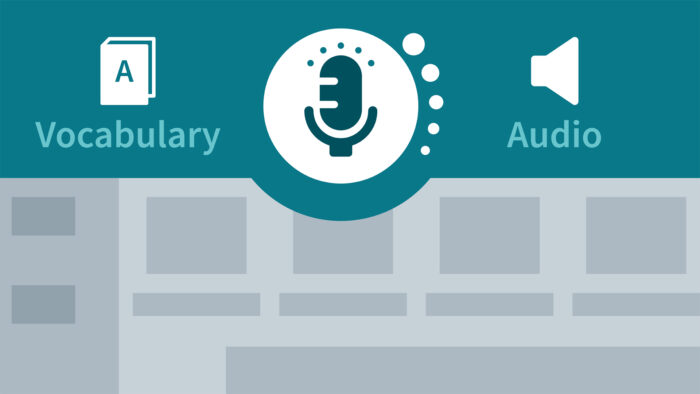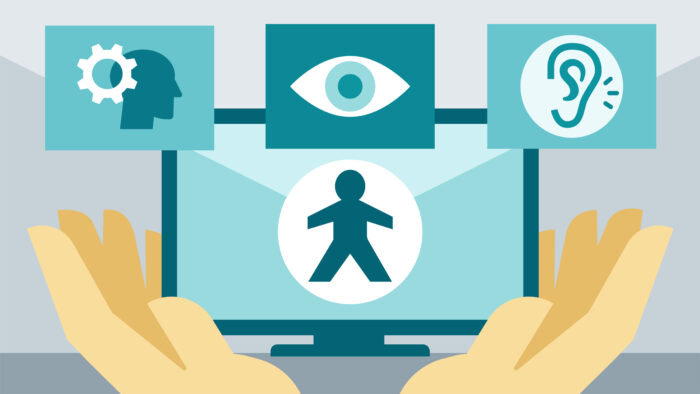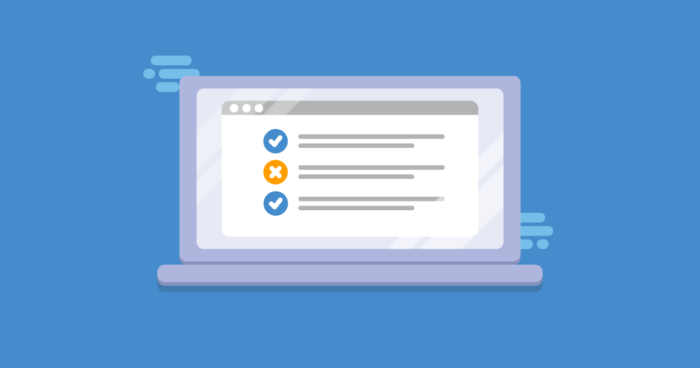
Thankfully, we live in a time where inclusion is becoming mainstream. The public now hears messaging about diversity and tolerance from corporate advertising, a sign of how deeply these values have penetrated society. This is overdue and welcome!
Likewise, it’s encouraging that many jurisdictions now have laws about making websites and digital products accessible for people with disabilities. It suggests that these ideas have achieved critical mass.
However, the accessibility standards that the law compels companies to meet should be the baseline standard, not the end goal in and of itself. Otherwise, the law could unintendedly cause companies to fall short of the accessibility standards they can reach.
Striving for maximum online accessibility is especially important when you consider just how impossible it is to live and function in the modern online world when you face digital barriers. Read on to learn why industry-leading companies aim to exceed legal compliance when it comes to digital accessibility, and how on-demand accessibility crowdtesting platforms like Makeitfable.com help them get there quickly.
Nothing to Lose, Everything to Gain
The world during COVID-19 has made it apparent that businesses that can meet broad online demands with nuance and power are well-positioned to succeed in the changing market to come. If Digitally-Native Vertical Businesses understand one thing, it’s that the secret to exponential sales growth is increasing the potential customer base.
Creating a truly accessible website or app connects people with disabilities to the services they require. But from a commercial perspective, total accessibility maximizes your potential pool of customers by ensuring nobody faces a barrier to purchasing your product or using your services.
Simply put, there’s nothing to lose and everything to gain by having a digital world that everyone can access. Thankfully, there are on-demand accessibility crowdtesting platforms devoted to helping companies or any digital creator reach full accessibility, quickly, and at a lower cost.
Four Tests On-Demand Accessibility Crowdtesting Platforms Use
Accessibility needs to be more than just a buzzword or a slogan. When a company or digital creator wants to ensure their product is truly accessible, they find an on-demand accessibility crowdtesting platform to guide them from the start.
This approach is the cheapest and most effective way to ensure you achieve WCAG compliance or better. The best on-demand accessibility crowdtesting platforms conduct four tests. Keep reading to learn more about each stage.
1. User Interviews

The best people to ensure your product is genuinely accessible are testers who have a variety of real disabilities. At this first stage, not only is it essential to account for every type of disability, but each one needs to be tested on a range of different software and assistive technologies, like ZoomText for magnification or Dragon Naturally Speaking for alternative navigation.
This approach to testing allows app creators and web designers to perform user research in real-time. When they want to connect with the real people testing their early designs, they can do so via chat, email, or video chat.
Crucially, they’ll be able to observe the tester’s screen while the test is taking place. This lets them glimpse how people with real disabilities actually use their website or apps before it launches.
2. Prototype Reviews

One mistake digital creators often make is tacking on accessibility requirements at the end of the process. Their heart and mind are in the right place, but unfortunately, this error results in poor accessibility that can increase costs.
Online accessibility needs to be built right into the process from the start to be truly universal. On-demand accessibility crowdtesting platforms allow UX designers to share interactive prototypes of their product with a user and guide them in a moderated session.
Turning inaccessible websites or digital products into accessible ones after the fact is a needless and costly error. Ironing out any accessibility barriers before the launch is the most effective way to build a truly accessible website. It also substantially lowers the cost.
3. Compatibility Testing

There isn’t just one version of the product or website you create; it needs to be totally accessible on every single version of your product, which requires testing across web browsers and devices.
If your product is perfectly accessible to people on Apple devices but not Android, it isn’t universally accessible. The best on-demand accessibility crowdtesting platforms use up to five testers to probe and feel around for any accessibility barriers.
Ideally, this stage is unmoderated, unlike the earlier two. Sometimes it’s essential to watch the testers interact with the product, but other times they need to poke around on their own and unobserved.
4. QA Sessions

The last stage of testing is a live question-and-answer session with an expert screen reader user. Even once your product’s accessibility level has been established, there are still ways it can be tweaked and improved.
Are there still any questions after each development cycle? If so, this is where you can get them answered. Automation isn’t suited to solving every kind of problem. Having real people with disabilities probe your products and answer any questions lets you find issues that would have otherwise slipped through the cracks.
The entire world has moved online quickly. It’s common for people to rely on the internet and apps for their banking, news, entertainment, communications, and more. People even use it to learn how to cook, get recipes, or even order food.
Ensuring that the entire public has unimpeded access to the internet is a human rights issue, but there are also legal and commercial reasons to pursue this worthy goal. Having a community of live testers allows UX designers, product managers, and other digital creators to skip the recruitment process. Create better experiences for everyone while also providing universal access is a path to success.
Whatever motivation is driving you and your business, connect with an on-demand accessibility crowdtesting platform early on in your process to get the best results possible at the lowest cost.











